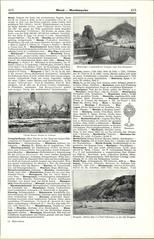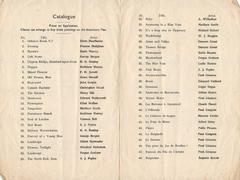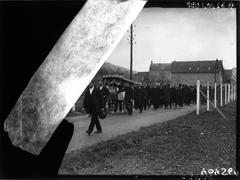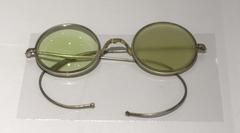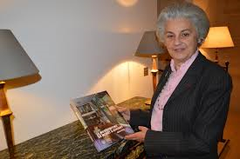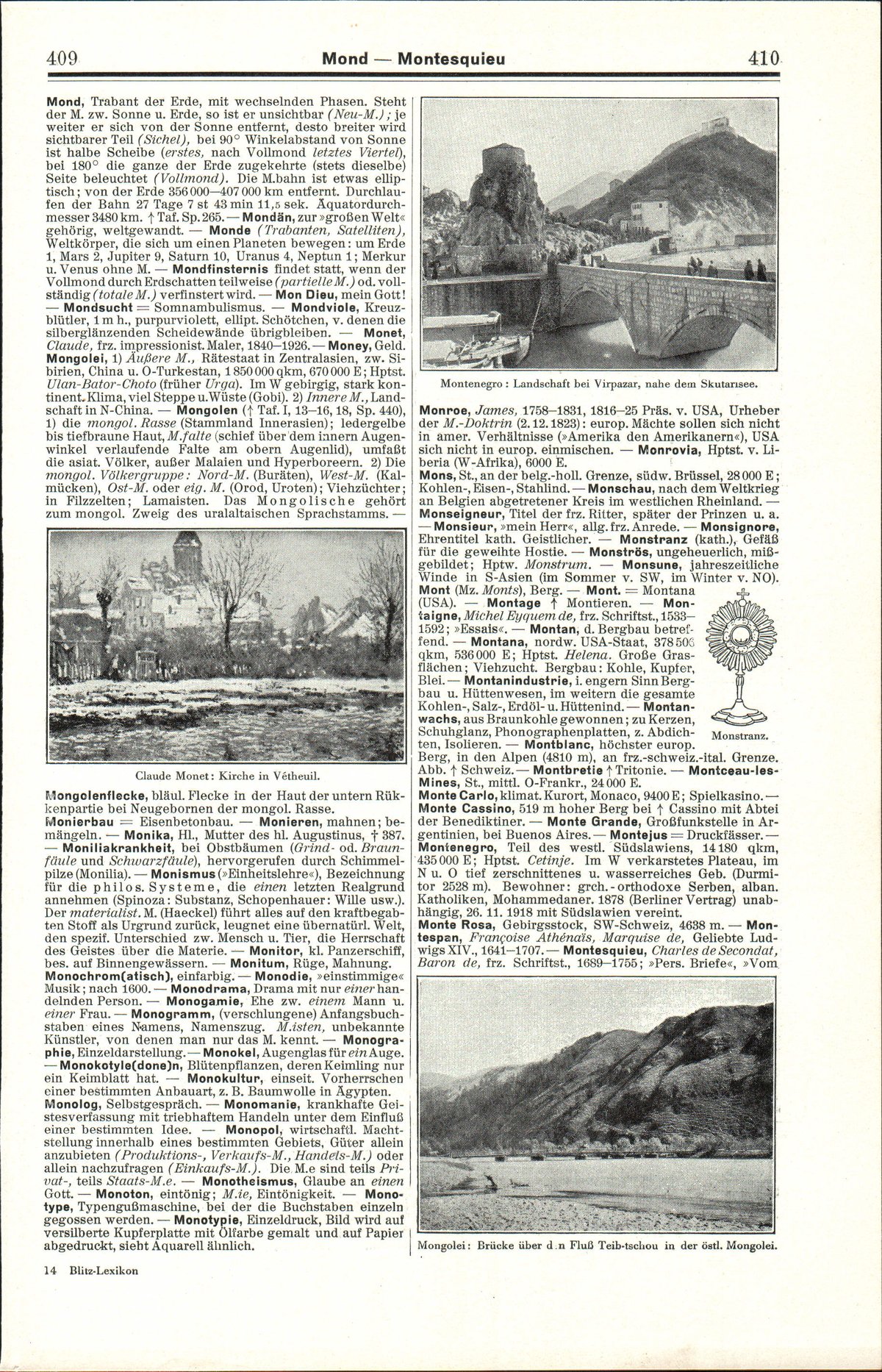
Claude Monet’s Home and Gardens in Giverny: Visiting Hours, Tickets, and Visitor Guide
Date: 14/06/2025
Introduction
Nestled in the picturesque Normandy village of Giverny, Claude Monet’s House and Gardens are more than just a tourist destination—they are a living testament to the enduring legacy of the Impressionist master. Since Monet’s arrival in 1883, the estate has inspired artists, gardeners, and visitors from around the world. Here, Monet meticulously transformed a modest property on the Seine’s edge into a vibrant sanctuary, blending French horticultural tradition with Japanese artistic influence. The estate is divided into two principal sections: the Clos Normand flower garden and the iconic Water Garden, each designed to evoke the fleeting beauty that Monet captured in his art, especially his celebrated Water Lilies series. Today, the meticulously restored house and gardens offer a rare opportunity to immerse yourself in the world that inspired one of art history’s most influential figures.
For those planning a visit, this guide offers comprehensive information on visiting hours, ticketing options, accessibility, travel logistics, and essential tips—ensuring a memorable and well-organized experience. Beyond Monet’s home, the charming village of Giverny and nearby attractions such as the Musée des Impressionnismes enrich your understanding of the Impressionist movement and the enduring significance of Monet’s work. For up-to-date details, consult the Fondation Claude Monet website, Giverny Tickets, and DailyArt Magazine.
Origins of Monet’s House and Gardens in Giverny
Claude Monet’s connection to Giverny began in 1883, when he moved to the village with Alice Hoschedé and their blended family. Initially renting the pink house with green shutters—locally called the House of the Cider-Press—Monet was immediately captivated by the property’s potential (The Collector). In 1890, after seven years, he purchased the property and surrounding land, cementing his vision for a home and garden that would serve as both sanctuary and artistic inspiration (One Million Places).
Monet’s Life and Work at Giverny
From 1883 until his death in 1926, Monet expanded and adapted his home to meet the needs of his large family and his evolving artistic ambitions. The house grew in length, wings were added, and a spacious studio was built in a converted barn (Giverny.org). Every detail reflected Monet’s taste, from the pastel façade and green shutters to the colorfully decorated interiors and the display of works by his Impressionist peers. The home served not just as a family residence, but as a creative hub where Monet entertained friends, collectors, and fellow artists (DailyArt Magazine).
The Creation and Evolution of the Gardens
Monet’s gardens are a manifestation of his artistic philosophy, blending meticulous horticulture with painterly design. The Clos Normand, the flower garden in front of the house, features geometric beds and a riotous succession of blooms—daffodils, tulips, roses, sunflowers, and more—crafted for dynamic color and visual harmony throughout the seasons (Rove.me).
In 1893, Monet acquired land across the road to create the Water Garden, inspired by Japanese art and the concept of Japonisme. He diverted a branch of the Epte River, built the now-iconic Japanese bridge draped with wisteria, and filled the pond with water lilies. The Water Garden soon became the central motif of Monet’s later works, especially the Water Lilies series (The Collector).
Significance in Art History
Monet’s Giverny estate is inseparable from the evolution of Impressionism. The gardens were both subject and studio, providing endless opportunities to observe and paint light, atmosphere, and natural forms. Giverny became a magnet for artists, especially American Impressionists, who formed a vibrant colony in the village, further cementing its place in art history (The Collector).
Decline and Restoration
After Monet’s death in 1926, the estate passed to his son Michel, who left it largely unattended. Blanche Hoschedé Monet, Monet’s stepdaughter, cared for the property until 1947, but after her death, neglect and wartime damage took their toll (One Million Places). In 1966, Michel bequeathed the estate to the Académie des Beaux-Arts, and extensive restoration began in 1977 under Gérald Van der Kemp. Thanks to international support, especially from American donors, the estate reopened to the public in 1980 (The French Life).
Visiting Monet’s House and Gardens: Hours, Tickets & Accessibility
- Season: Open annually from April 1 to November 1.
- Hours: Daily, 9:30 a.m. – 6:00 p.m. (last admission at 5:30 p.m.)
Check official website for current hours.
Ticket Prices (2024):
- Adults: €11.50 (online advance), €11.00 at entrance (subject to long queues)
- Students/Children under 18: €7.00
- Visitors with Disabilities: €6.00
- Children under 7: Free
- Guided tours: ~€58 per person (1.5 hours)
Booking Tips:
Advance online booking is highly recommended for both individual and group visits, especially during peak spring and summer months (Giverny Tickets).
Accessibility:
The gardens are mostly accessible, with paved and gravel paths. Wheelchairs and strollers are available for rent. Some narrow or uneven paths may pose challenges. There is a dedicated entrance for visitors with reduced mobility.
Travel Tips and Getting There
From Paris:
- Train: Paris Gare Saint-Lazare to Vernon-Giverny (1 hour), then shuttle bus, taxi, or bike rental for the 5 km to Giverny.
- Car: Around 1–1.5 hours; parking available nearby.
- Tours: Many companies offer day trips with transportation and skip-the-line entry.
Local Transport:
Shuttle buses run between Vernon-Giverny station and the gardens during open season. Cycling is a scenic option with well-marked routes.
Best Times:
Peak bloom is April–June and again in September–October for fall colors. Weekday mornings or late afternoons are best for avoiding crowds.
Highlights and Visitor Experience
The Clos Normand (Flower Garden)
A tapestry of color and texture, this formal yet exuberant garden features a central path lined with arches of climbing roses and nasturtiums, geometric beds bursting with seasonal blooms, and scattered fruit trees. Monet’s color theory is evident in every planting combination (Travel France Bucket List).
The Water Garden
Across the road, the Water Garden is a tranquil haven of reflective water, weeping willows, bamboo groves, and the famed Japanese bridge. The surface of the pond, covered with water lilies, provides endless opportunities for photography and contemplation (xdaysiny.com).
Monet’s House and Studio
The house, painted in Monet’s signature pastels, is filled with period furnishings, Japanese prints, and reproductions of Monet’s masterpieces. The studio, now an exhibition space, immerses visitors in the artist’s creative environment.
Notable Vistas
- Japanese Bridge: Best viewed in late spring with wisteria in bloom.
- Central Pathway: Classic framing of Monet’s house with flower arches.
- Pond Reflections: Early morning offers serene, mirror-like photos.
Amenities and Services
- Restrooms: Near entrance and throughout the grounds.
- Gift Shop: Monet-inspired books, prints, seeds, and gifts.
- Dining: Cafés and restaurants in Giverny village; picnics not permitted in the gardens.
- Accessibility: Wheelchairs and strollers available; accessible toilets provided.
- Photography: Allowed in gardens; restricted inside the house.
Nearby Attractions
- Musée des Impressionnismes Giverny: Exhibitions on Impressionism, Nabis, and Monet’s contemporaries (Google Arts & Culture; Official Museum Site)
- Village of Giverny: Quaint streets, artists’ studios, Monet’s gravesite at the Church of Sainte Radegonde.
- Château de La Roche-Guyon and Seine Valley: Nearby destinations for cultural and natural exploration.
Special Events and Guided Tours
The Fondation Claude Monet hosts occasional exhibitions, workshops, and guided tours. Audio guides are available for rent. Private and group tours can be booked online.
Frequently Asked Questions (FAQ)
Q: When is the best time to visit Monet’s House and Gardens?
A: April–June for peak blooms; September–October for fall colors and fewer crowds.
Q: How can I avoid long queues?
A: Book tickets online in advance and visit on weekday mornings or late afternoons.
Q: Are the gardens accessible for visitors with reduced mobility?
A: Most pathways are accessible, with a dedicated entrance for PRM visitors.
Q: Can I take photos inside the house?
A: Photography is allowed in the gardens but typically restricted inside the house.
Q: Are guided tours available?
A: Yes, bookable online for an enhanced experience.
Practical Tips
- Advance Booking: Essential during peak season.
- Timing: Early or late visits provide better light and fewer crowds.
- Footwear: Comfortable shoes recommended; some paths are uneven.
- Weather: Bring sun protection, water, and rain gear as needed.
- Bags: Large bags and suitcases not allowed; no cloakroom available.
Contact Information
Claude Monet Foundation
84 rue Claude Monet, 27620 Giverny, France
Tel: +33 (0)2 32 51 28 21
Email: [email protected]
Official website
Musée des Impressionnismes Giverny
99 rue Claude Monet, 27620 Giverny
Tel: +33 (0)2 32 51 94 65
Official website
Conclusion
Claude Monet’s House and Gardens in Giverny are a living celebration of art, history, and nature. Whether you’re wandering beneath rose arches, gazing at water lilies, or exploring the pastel-hued rooms of Monet’s home, the experience is a profound journey into the heart of Impressionism. Careful planning—considering visiting hours, ticket options, accessibility, and travel—will ensure you make the most of this unforgettable destination. For the latest updates, ticketing, and event information, always consult the Fondation Claude Monet website.
Enhance your visit with audio guides or interactive apps like Audiala, and stay connected through social media for special events, seasonal highlights, and travel inspiration. Monet’s Giverny is not just a destination, but a source of enduring inspiration for all who visit (The Collector; DailyArt Magazine; Giverny.org).
Sources and Further Reading
- Visiting Monet’s House and Gardens in Giverny: Hours, Tickets & Travel Tips, 2024, The Collector (https://www.thecollector.com/claude-monet-and-giverny-water-lilies/)
- Monet’s Home as Inspiration, 2024, DailyArt Magazine (https://www.dailyartmagazine.com/monet-home-as-inspiration/)
- Gardens of Claude Monet, Giverny, 2023, One Million Places (https://one-million-places.com/en/france/vernon-gardens-of-claude-monet-giverny)
- Monet’s House and Gardens, 2024, Giverny.org (https://giverny.org/monet/home/)
- Claude Monet’s Garden in Giverny, 2024, Rove.me (https://rove.me/to/france/claude-monet-house-and-gardens-giverny)
- Monet’s Garden and Artistic Influence, 2024, Masterapollon (https://masterapollon.com/the-artists-garden-at-giverny-claude-monet/)
- Fondation Monet in Giverny, 2024, Wikipedia (https://en.wikipedia.org/wiki/Fondation_Monet_in_Giverny)
- Musée des Impressionnismes Giverny, 2024, Google Arts & Culture (https://artsandculture.google.com/story/garden-side-from-monet-to-bonnard-enter-the-artists-gardens-museum-of-impressionism-giverny/PwXRux_z6nXjLg?hl=en)
- Monet’s Garden in Giverny, 2024, Travel France Bucket List (https://travelfrancebucketlist.com/monet-garden-in-giverny-france/)
- Visiting Monet’s Garden in Giverny, 2024, xdaysiny (https://xdaysiny.com/visiting-monet-garden-in-giverny/)
- Claude Monet’s House and Gardens in Giverny: Visiting Hours, Tickets, and Visitor Guide, 2024, Official Fondation Claude Monet Website (https://claudemonetgiverny.fr/)
- Musée des Impressionnismes Giverny Official Website, 2024 (https://www.mdig.fr/en/plan-your-visit/opening-times-and-access-2/)
- Monet Giverny Restoration History, 2018, The French Life (http://www.thefrenchlife.org/2018/02/20/monetgiverny/)
